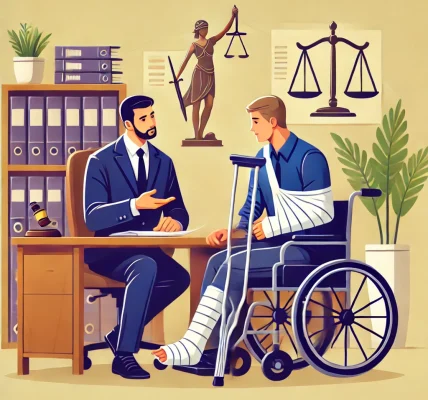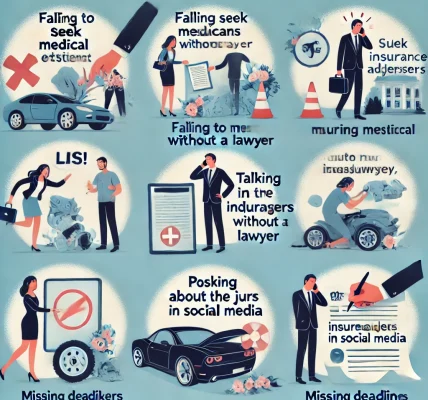Introduction
When dealing with personal injury cases, one of the most crucial legal principles that can affect compensation is comparative fault. This doctrine determines how much compensation an injured party can receive if they are partially responsible for the accident. Understanding comparative fault is essential for both plaintiffs and defendants, as it can significantly impact the outcome of a case. In this article, we will explore what comparative fault is, its types, how it works in different states, and how it influences personal injury settlements.
What is Comparative Fault?
Comparative fault, also known as comparative negligence, is a legal concept that allocates responsibility among all parties involved in an accident based on their degree of fault. If a plaintiff is found partially responsible for their injuries, their compensation will be reduced in proportion to their level of fault.
This system is in place to ensure fairness in personal injury cases. Instead of barring a plaintiff from recovering damages if they contributed to the accident, comparative fault allows them to recover compensation, albeit in a reduced amount.
Types of Comparative Fault Systems
There are three primary types of comparative fault systems used across different states in the U.S.:
1. Pure Comparative Fault
Under this system, an injured party can recover damages even if they are 99% at fault. However, the compensation they receive will be reduced based on their percentage of fault. For example:
- If a plaintiff is awarded $100,000 but is found to be 40% at fault, they will receive only $60,000.
- If they are 90% at fault, they will still receive 10% of the damages.
States that follow pure comparative fault include California, Florida, and New York.
2. Modified Comparative Fault (50% Bar Rule)
In states with this rule, a plaintiff can only recover damages if they are less than 50% at fault. If their fault reaches 50% or more, they cannot receive any compensation.
- Example: If a plaintiff is 49% at fault, they can recover 51% of their awarded damages. However, if they are 50% or more at fault, they receive nothing.
States following the 50% bar rule include Colorado, Georgia, and Tennessee.
3. Modified Comparative Fault (51% Bar Rule)
This variation allows plaintiffs to recover damages as long as they are less than 51% at fault. If they are 51% or more at fault, they are completely barred from receiving compensation.
- Example: If a plaintiff is 50% at fault, they can recover 50% of their damages, but if they are 51% at fault, they get nothing.
States with the 51% bar rule include Texas, Illinois, and Ohio.
How Comparative Fault Works in Personal Injury Cases
When a personal injury case is presented in court or during settlement negotiations, both parties provide evidence to establish fault. The process typically involves:
- Police reports detailing the accident
- Eyewitness testimonies
- Surveillance footage
- Expert analysis, such as accident reconstruction
Once the fault percentages are determined, the compensation is adjusted accordingly. Insurance companies use comparative fault principles to minimize payouts, which is why having strong legal representation is crucial.
Examples of Comparative Fault in Action
Example 1: Car Accident
A driver runs a red light and collides with another vehicle. However, the other driver was speeding at the time of impact. After investigation, it is determined that:
- The driver who ran the red light is 70% at fault.
- The speeding driver is 30% at fault.
If the speeding driver files a lawsuit and is awarded $50,000 in damages, their compensation will be reduced by 30%, meaning they receive $35,000.
Example 2: Slip and Fall
A customer slips on a wet floor in a grocery store but was texting and did not notice the warning sign. The court finds:
- The store was 60% at fault for not placing enough warning signs.
- The customer was 40% at fault for not paying attention.
If the total damages amount to $20,000, the customer would receive $12,000 after the 40% reduction.
How Comparative Fault Affects Personal Injury Settlements
Most personal injury claims are settled out of court, and insurance companies often use comparative fault to reduce settlement amounts. Key factors that influence settlements include:
- The severity of injuries
- The degree of fault assigned
- The strength of evidence
- Negotiation skills of the attorneys
For plaintiffs, it is essential to gather substantial evidence to minimize their percentage of fault and maximize compensation.
Tips for Handling a Personal Injury Case Involving Comparative Fault
- Document Everything – Collect photos, videos, witness statements, and medical reports.
- Hire an Experienced Attorney – A skilled lawyer can help reduce your assigned fault percentage.
- Avoid Discussing the Case on Social Media – Insurance companies may use social media posts against you.
- Do Not Admit Fault – Even a simple apology can be misinterpreted as an admission of guilt.
- Follow Medical Advice – Adhering to treatment plans strengthens your claim.
Conclusion
Understanding comparative fault is crucial for anyone involved in a personal injury case. This legal principle determines how damages are awarded and ensures that responsibility is distributed fairly. Whether your state follows pure comparative fault or a modified version, knowing how the system works can help you navigate personal injury claims more effectively.
If you or a loved one has been injured in an accident, consulting a knowledgeable personal injury attorney can significantly impact the outcome of your case. By gathering strong evidence and understanding your rights, you can maximize your compensation even if you share some fault in the accident.




